How to choose the right fruit tree varieties for a year-round harvest
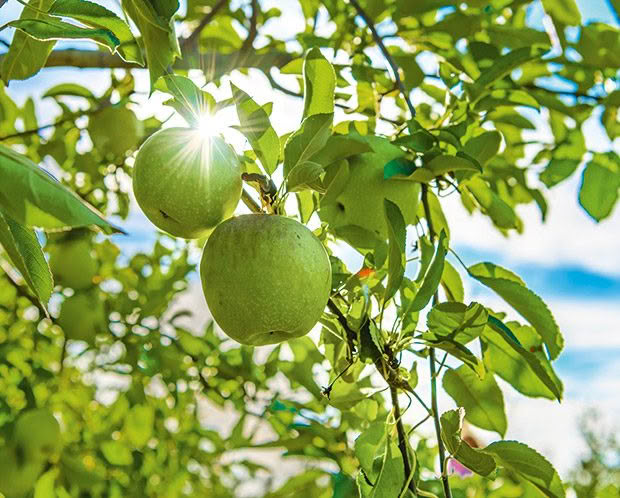
With this guide, you’ll be sure to select fruit trees that will yield fruit year-round.
Words: Sheryn Dean
Choosing the right fruit trees for your orchard sounds simple, but it quickly gets complicated. It’s a bit like choosing the right type of car. You may know you want a 4WD, but there’s a big difference between a Rav4 and a Range Rover.
Let’s say you want plums, peaches, apples, and pears. Some of the things you need to consider for each one include:
– flavour;
– colour;
– robustness;
– disease resistance;
– bearing age;
– growth height;
– crop size;
– ripening time;
– storage properties.

This is my year-round orchard list. Note it’s based on my Waikato location, and will vary slightly depending on climate.
I added further complexity to my orchard because I wanted it to provide fresh fruit all year round, meaning I’d need a lot of trees. With some temperate fruits such as plums, peaches, apricots, apples, pears, and feijoas, you can plant an early, middle, and late-season variety and harvest fruit for 3-5 months. The problem is an individual tree might ripen its entire crop all in one week.
Early season fruit is usually risky as late frosts and storms can affect fruit set. You may not get a good crop every year, but when you do, it’s worth it. Mid-season varieties are more reliable and usually more prolific.
These are the varieties to choose from if you want good eating fruit and lots leftover to preserve. Late season pipfruit, especially apples and pears, generally keep well, and you can store them for months.
Sheryn’s tip: know your pollinators
If you’re only planting one or two varieties of a particular fruit, research their pollination needs. Waimea Nursery grow a wide range of fruit tree varieties for home gardeners and include a list of pollinators for each one. www.waimeanurseries.co.nz
TASTE
The most wonderful thing about homegrown fruit is that you can make sure it will always be bursting with flavour. If you eat fruit picked from my orchard and then the same type bought at a supermarket, it’s like comparing a Tesla to a Lada.
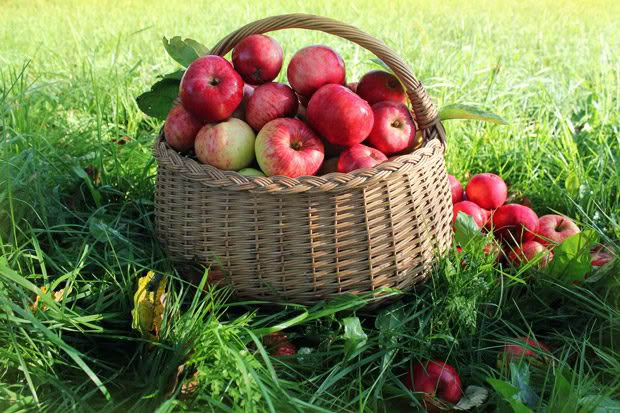
There are so many factors that contribute to it, including:
– tree ripening (vs using gas after picking as done in commercial processing);
– freshness;
– trace elements.
But the biggest factor is that I can grow a huge range of varieties with the best flavour. There are only a few commercial varieties, mostly very sweet, and they must also be quite robust (to survive handling/transport) and only ripen after we’ve bought them.
Home orchard varieties don’t need to fit any of those criteria, so there’s a much wider range of great-tasting fruit available.
DISEASE-RESISTANCE
This is another characteristic that’s important if you like an easy-care tree and don’t want to use chemicals. There’s a wide range of heritage varieties, many of which will suit your climate and soil. Commercial varieties have specific climate and soil needs, and won’t be as robust if you can’t provide them.
POLLINATION
Fruit growth begins when ‘male’ pollen transfers to a ‘female’ ovary. In nature, to maintain genetic diversity, the pollen usually comes from a completely different variety of the same type of fruit (known as cross-pollination). Even varieties promoted as self-pollinating benefit from cross-pollination, generally giving you more fruit.
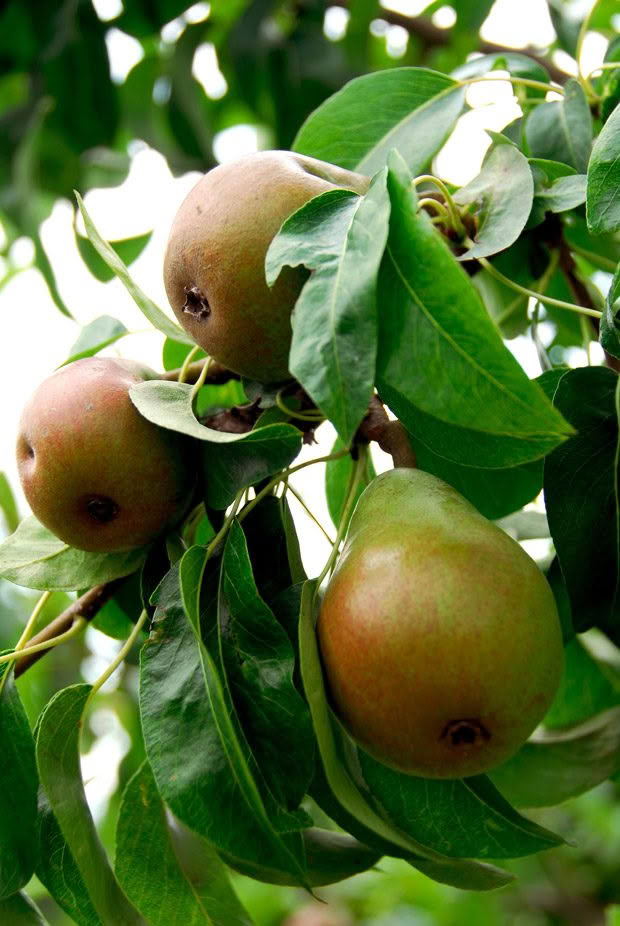
Peaches, nectarines, apricots, and any citrus will self-pollinate and tend to do quite well (with some exceptions). Pear, apple, feijoa, plum, and nut tree varieties usually need to cross-pollinate with another variety (although again, there are exceptions).
3 OTHER THINGS TO KNOW ABOUT POLLINATION
If your neighbour has an orchard with the same types of trees, or you’ve planted more than one variety, your pollination requirements should be covered. Other kinds of fruit from the same family may act as pollinators. For example, some crabapples will pollinate some apples, and some nashi will pollinate some pear varieties.
European plum varieties flower early in spring, while Japanese and crossed types flower later, so they can’t pollinate each other. Frustratingly, few nurseries label plums as European or Japanese. A basic guide is eating plums are Japanese or crosses, while those used in preserving – prunes, damson, greengages, mirabelle – are European.
NUTRITION
My other prerequisite for anything in my orchard is fruit must be nutrient-rich. NZ research has found the Monty’s Surprise apple has very high levels of cancer-fighting compounds. It tastes tangy if picked early (great for cooking), but sweetens as it ages on the tree.
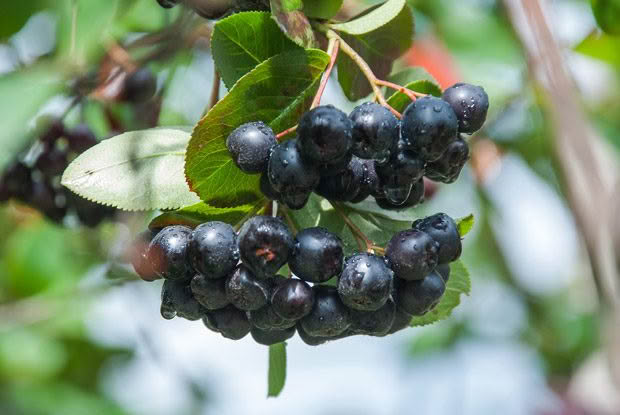
Some of the most nutrient-rich options may only be available from a specialist nursery. For example, tart, dry, earthy aronia berries (Aronia melanocarpa) have one of the highest antioxidant activity levels of any fruit.
Tip: Why you need to order early
Many of the more obscure or heritage varieties are only available from specialist nurseries. Order them online early as they can quickly run out of stock – many start taking orders as early as February, but trees aren’t delivered until the winter planting season.
Sheryn’s Favourite Fruits
These are the varieties I love that do well in my orchard, near Tirau, south-east of Hamilton.
PEACHES (Golden Queen, Black Boy)
Golden Queen is one of NZ’s favourite peaches, but Black Boy also tastes great and has impressive red-purple flesh. Even grafted trees of these varieties seem resistant to the leaf curl and brown rot that afflict many other varieties growing in humid climates.
Sheryn’s tip: try something different
There is a tendency to plant what we know, for example, Golden Queen peaches, because we’ve eaten them most of our lives. But, as much as I love them, a Blackboy peach is a whole new taste sensation, and not a variety you’ll find in a store.
CITRUS FOR EATING
These are crucial, as they’re all I have fruiting in the late winter-spring period.
Mandarin (Encore): Good for snacking, easy-peel, produces abundant crops over a long season.
Orange (Washington Navel): Delicious. It’s hard to beat a good navel orange (so-called because their apex resembles a belly button).
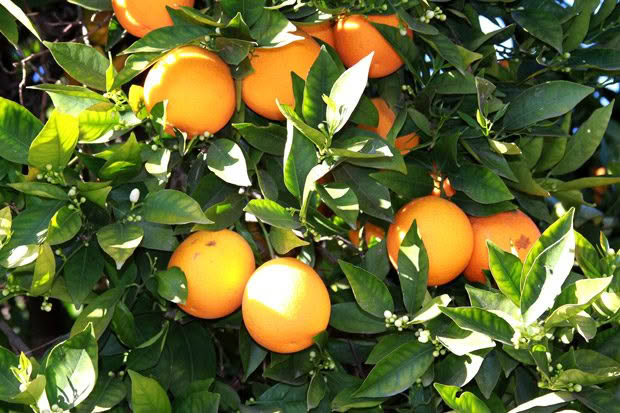
OTHERS
Lemonade: prolific crops, refreshing flavour, always a hit with kids, if only because of the name.
Ugli fruit: my favourite citrus, it’s so yummy. Maybe it’s because I like the underdog as there’s no marketing kudos to its name. There’s also no lady-like way to eat it – bend at the waist and let the juice dribble down your chin and onto the ground.
Citrus for juicing: Golden Special grapefruit, tangelos, blood oranges (for colour). I don’t like to eat these citrus, but they’re good for juicing and have abundant crops that hang on the tree over a long period.
FEIJOAS (Unique, Triumph, Apollo)
Feijoas vary hugely in flavour and texture. Unique is an early-season fruit and produces over a long period, but its branches twist, turn and snap with the weight of the fruit.
Though it’s considered self-fertile, I’d recommend you pair it with a late-season variety like Triumph or a mid-season Apollo that has really large fruit that’s great for processing.

PLUMS (Hawera, Louisa)
I planted Elephant Heart, named for its large, tasty, juicy flavour, but every tree I know has split down the trunk, so I’m going to replace it with a Hawera.
Louisa is a large, prolific yellow plum which when turned into jam tastes like apricot. Some people have issues with hardened tips. My tree was affected after I didn’t feed it – the hardened tips disappeared after I fed it with compost.
OTHERS
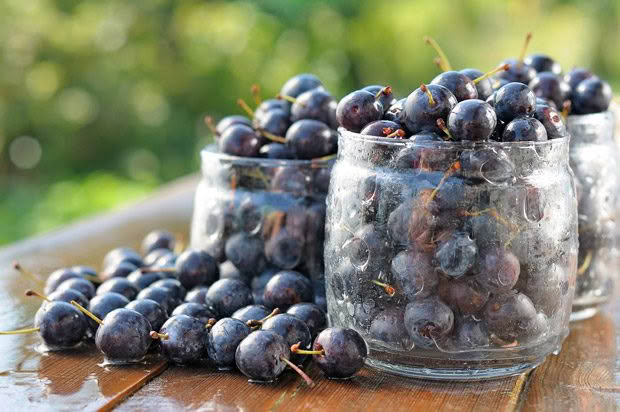
Greengages: delicious flavour, but needs the right pollinating partner for good fruit set.
Prunes: by far my favourite eating plum, and you can dehydrate it too. Trust me on this – don’t think of those wizened brown things your grandparents buy.
Damsons: not for eating, but the ultimate for jams, cheese, vinegars etc.
Sheryn’s tip: the Rangpur lime
The best juicing citrus ever. It’s an orange lime with an unusual flavour, and worth searching for.
PEARS (Worden Seckle)
When I put these beautifully textured, delicious little pears on my fruit stand, someone commented they looked a bit runty. I changed the sign to ‘gourmet baby pears’ and sold out within minutes.
PERSIMMON (Fuyu)
Persimmon trees have such gorgeous autumn colour and bright orange fruit in the drab of winter that you could grow them as an ornamental. I’m not a big fan of fresh persimmons, unless they’re part of a cheeseboard.
They’re yummy as a dried snack and a good substitute for apricots in most recipes. Their main benefit is that they fruit when nothing else is available. There’s also more than enough for me to share with the cute little tauhou (silvereyes, wax-eyes).
MORE HERE
Love this story? Subscribe now!
 This article first appeared in NZ Lifestyle Block Magazine.
This article first appeared in NZ Lifestyle Block Magazine.
